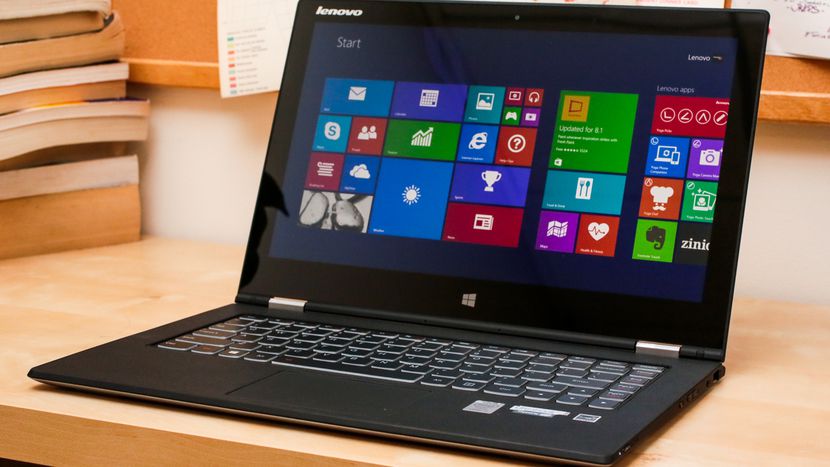The Lenovo IdeaPad Yoga 13 is a convertible laptop created by Lenovo and first announced at the International CES 2012 in January. The Yoga 13 gets its name from its ability to take on various form factors due to its screen being mounted on a special two-way hinge.
Lenovo’s high-end machines, the 13-inch IdeaPad Yoga is delightfully planned. It is designed with a delicate touch external “covering” and textured soft matt black innards, its look is very reminiscent of the already attractive Lenovo IdeaPad U260, aside from more rich and far slimmer at a negligible 16.9mm. In spite of the fact that the Yoga’s insides remain black, the outside can be had in either a bronzed orange or silver grey, both of which look fantastic.

The Lenovo IdeaPad Yoga 13 works best as a full-time portable workstation and low maintenance tablet, since when it’s folded once again into a slate, despite everything you have the console calling attention to from the back of the system. In spite of the fact that the console and touch cushion are deactivated in this mode, it’s as yet not perfect. In addition, regardless of the buildup, Windows 8 is as yet not a 100-percent tablet-friendly OS, and there are some frustrations that span all the Windows 8 tablet-style devices we’ve tested.
Display,Design and Features
The Yoga 13 is 17mm thick. The Yoga’s hybrid design was achieved through the use of a special patented hinge that allows the keyboard to flip flush to the back of the display. The Yoga 13’s pivot enables the gadget to be held mostly open so it can be set upright on a level surface as a display. When the keyboard is folded away the computer functions as a touch-controlled tablet. Much of the Yoga 13’s usability as a tablet is made possible through Microsoft’s Windows 8.
The Lenovo Yoga 13 has been described as being thicker and heavier than most tablet devices at 17mm thin and has a native resolution of 1,600×900 pixels. That’s arguably the perfect resolution for a 13-inch laptop, giving you plenty of screen real estate without making onscreen text appear too small, as can happen with 1,920×1,080-pixel resolutions on smaller systems. Off-axis viewing angles are great, and unlike with some Windows 8 convertibles stuck with 1,366×768-pixel screen resolutions, you don’t feel like you’re paying a premium price for a substandard feature.
The Yoga 13 has 720p front-facing webcam. It has one USB 3.0 port and one USB 2.0 port, an HDMI output, a memory card reader, and a combo jack for audio input and output
Battery life,Connectivity and Performance
Even for a ultrabook, this is not among the most associated portable PCs you’ll discover. There’s a couple of USB ports, one 3.0, one 2.0, and it has a HDMI port, a combo sound jack, and a SD card opening. The absence of implicit Ethernet is justifiable, however this is the principal tablet in an extended period of time with just a single USB 3.0 port.
The battery life of the Yoga 13 is estimated at eight hours. Yoga 13’s battery life in normal day-to-day usage, will be closer to six to eight hours of life, depending on the screen brightness and CPU saturation.
Pros
- Flexible body (it’s in the name)
- Soft-touch materials throughout
- Good screen
- Decent keyboard
- Stylish looks
Cons
- Heavy for a ‘tablet’
- No optional digitizer stylus
- Poor speakers
- Keyboard not up to highest Lenovo standards
Key Features
- Review Price: £999.00
- 13-inch 1600 x 900 IPS screen with 10-point touch
- Core i7 CPU, 4GB of RAM (up to 8GB), 128GB SSD (up to 256GB)
- Unique twist-round 360-degree hinge and soft-touch finish